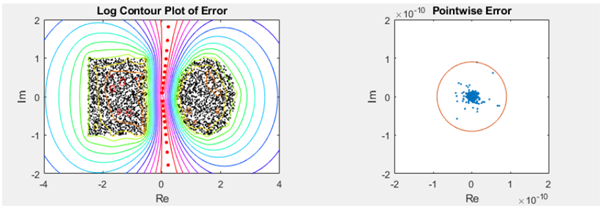The History of Rational Minimax Approximation: From the Remez Algorithm to the AAA-Lawson Algorithm
From the Remez Algorithm to the AAA-Lawson Algorithm
The field of rational minimax approximation has a rich history, tracing its roots back to the Remez algorithm, a pioneering technique in polynomial and rational approximation developed in the early 20th century. The algorithm has been instrumental in computing best approximations for functions on various domains, particularly for those with singularities or unbounded intervals. Over time, the Remez algorithm has undergone significant advancements, including the introduction of barycentric representations, which enhance the algorithm’s numerical stability and robustness.
In recent years, new approaches like the Adaptive Antoulas Anderson (AAA) algorithm have been integrated with the classical Remez method, leading to what is now known as the AAA-Lawson algorithm. This hybrid method provides a powerful tool for both real and complex rational approximations, particularly in cases where the function has complex singularities or irregular domains. The combination of AAA initialization and the Remez method results in a reliable and efficient approach to achieving high-precision minimax approximations.
This review highlights the evolution from the foundational Remez algorithm to the cutting-edge AAA-Lawson technique, emphasizing the growing importance of rational approximation in fields like signal processing, low-rank data compression, and complex analysis. The exploration of these algorithms demonstrates not only their historical significance but also their continued relevance in solving contemporary computational challenges.
